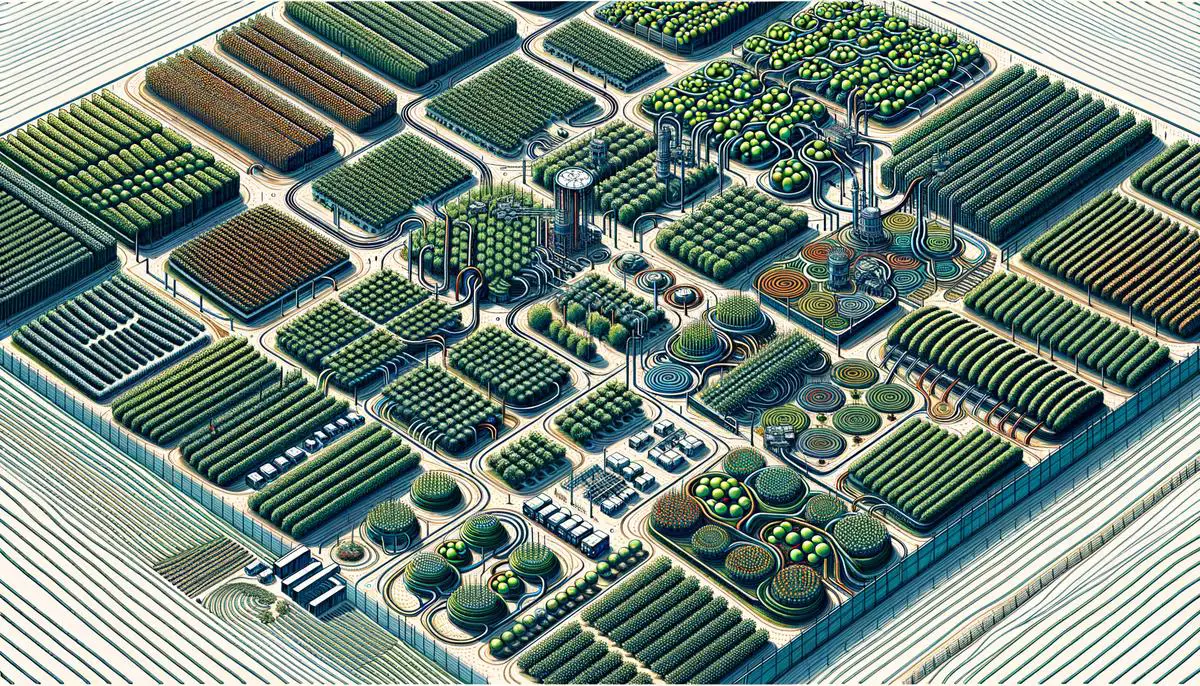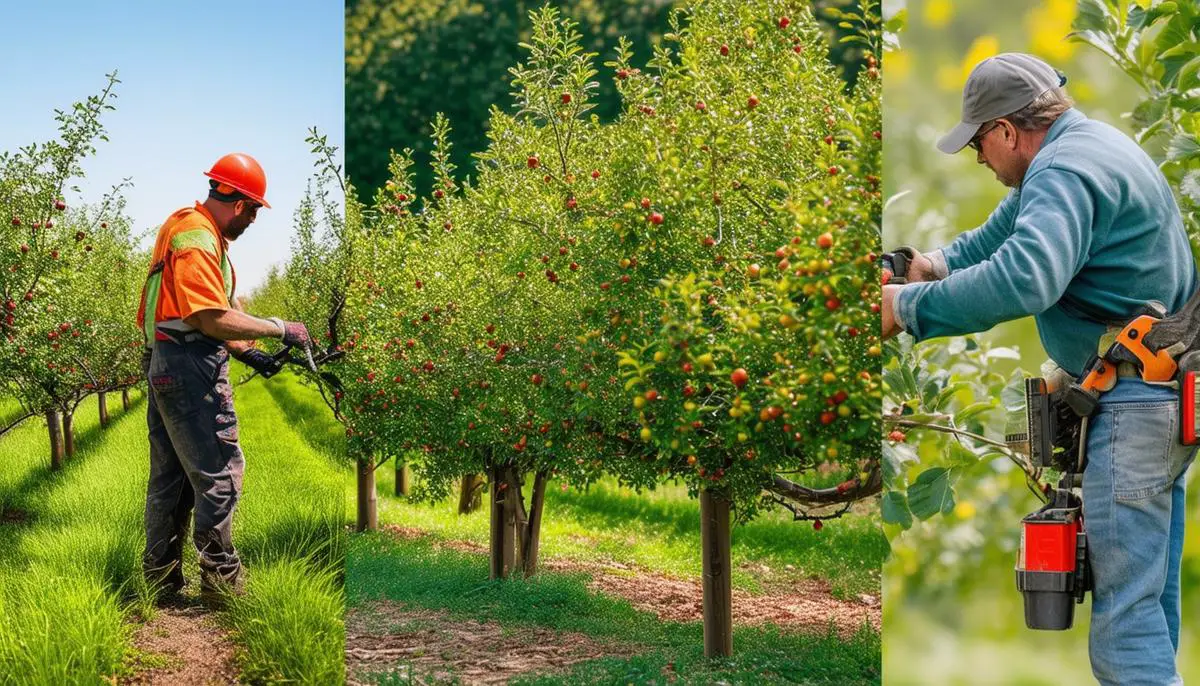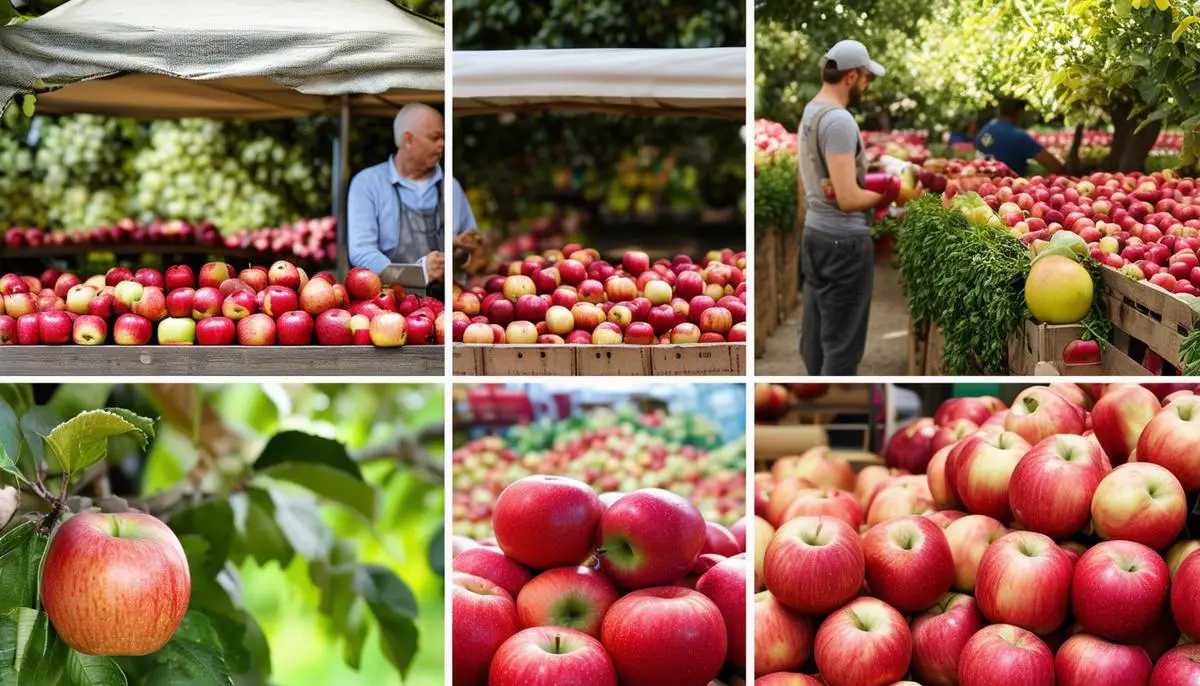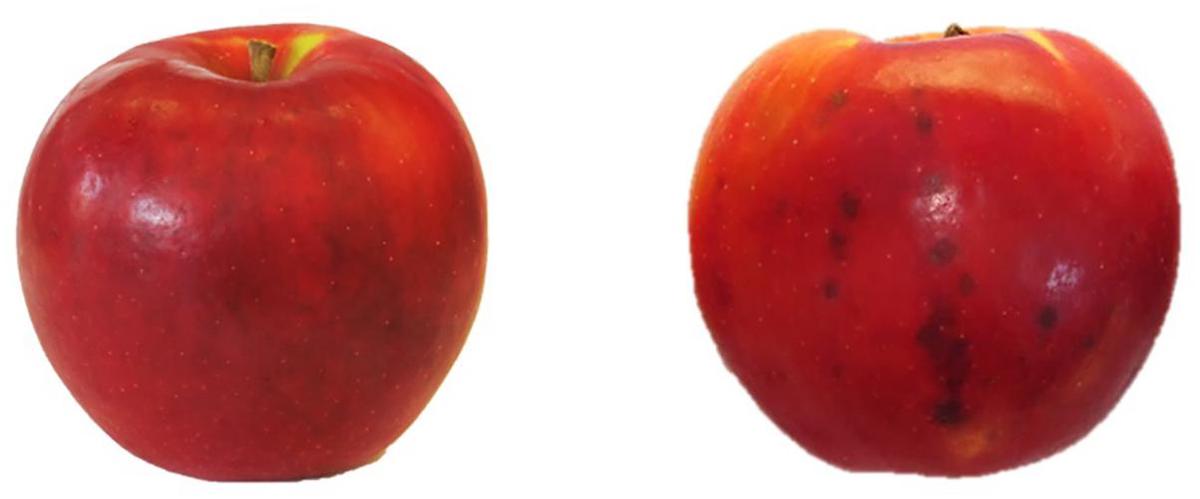Apple orchards are more than just fields of trees; they represent a significant opportunity in today's agricultural market. With the right approach, these orchards can yield not only delicious fruit but also substantial profits. From understanding the initial costs to mastering orchard management and marketing strategies, there's a lot to consider for anyone looking to enter this fruitful industry.
Market Research and Economic Outlook
Apple orchards are a green thumb's gold mine in today's market. The US apple industry alone pulls in annual revenues exceeding $5 billion. Global heavyweights like China give US growers a run for their bushels.
Washington, New York, and Michigan are prime apple real estate. From July to November, these trees get busy, cranking out apples faster than you can say "Johnny Appleseed." Gala and Honeycrisp are redefining what makes an apple desirable, focusing on taste that makes your taste buds do a happy dance.
- Recommended commercial orchard size: 10 acres
- Initial costs: $4,000 to $5,000 per acre
- Return on investment: Typically starts in the third year
- Yield: 300 to 500 bushels per acre at full production
Yearly costs include pruning, pest control, mowing, and irrigation. Premium apples command around a dollar per pound in pick-your-own settings, with wholesale prices being lower but offering bulk sale perks.
Apple farmers can make extra cash by adding tourism into the mix. Think pick-your-own days, apple-related festivities, and value-added products like apple butter and pies.
The modern-day orchard combines tradition with tech. Grafting remains a cornerstone, but high-tech orchards use hail netting and mulch to maximize yield while minimizing harm. Organic apples are a booming segment, with revenues swelling by 4-5% annually.
Innovation keeps sprouting new varieties that consumers gobble up. With every marketing campaign, a new apple like Cosmic Crisp turns into the apple of everyone's eye. Blending timeless apple-growing practices with cutting-edge demands is where the actual investment potential lies.
Planning and Establishment Costs
Before you can dream of dancing through rows of Gala and Honeycrisp trees, you've got to put in the groundwork. For a commercial venture, you'll want a solid 10 acres minimum. Expect to shell out $4,000 to $5,000 per acre for land preparation, including soil testing, amendments, and leveling.
Fencing is essential to keep deer from treating your orchard like a personal snack bar. A sturdy deer fence might cost you another $2,000 to $3,000 per acre.
Initial Costs Breakdown:
- Tree saplings: $1 to $2 each (A+ graded, two years old, grafted onto M9 rootstock)
- Equipment: Around $50,000 for start-up machinery
- Yearly recurring costs: $500 to $1,000 per acre
Don't forget labor costs for seasonal workers during busy times like planting and harvesting.
Tech investments like hail netting, mulch, and weather stations are part of the modern orchard toolkit to help brave the elements.
SBA resources can be a fantastic ally for funding. Use their templates to draft a killer business plan and secure financing.

Orchard Management and Production Practices
Running an apple orchard requires relentless attention, creativity, and TLC for those trees. Variety selection is crucial – aim for champions like Gala and Honeycrisp, but mix it up with some heirloom varieties to satisfy niche markets and diversify your crop.
Pest control is non-negotiable. Integrated Pest Management (IPM) combines cultural, physical, and chemical controls to keep invaders at bay. Some pros, like Barney Hodges at Sunrise Orchards, emphasize environmentally friendly pesticides and creating habitats for beneficial insects1.
Training your apple trees through strategic pruning and shaping forms that quintessential 'fruit wall' effect. This maximizes exposure to sunlight and airflow, reducing disease risk and boosting fruit quality.
Grafting is a game-changer, letting you grow multiple apple types on sturdy roots. It's not science fiction, just pure apple genius!
Key Management Practices:
- Use hail netting for weather protection
- Apply mulch for soil moisture and structure improvement
- Rent beehives during blossoming for optimal pollination
- Hire and train seasonal workers for harvest
Managing an apple orchard is equal parts art and science, blending tradition and innovation. There are recurring costs and relentless upkeep, but watching those trees thrive under your care is priceless. Before long, you're not just harvesting apples; you're cultivating a legacy, one perfect, juicy bite at a time.

Marketing Strategies and Sales Opportunities
Time to unleash those apples onto the world! We're talking sales strategies so tantalizing, they'll make Granny Smith herself get up and dance.
Wholesale
Wholesale is apple farming for the masses. Your primary buyers are grocery stores, juice companies, and other large-scale distributors. The key is consistency – these buyers want a reliable supply of uniform, blemish-free apples. Get your fruit preened and perfect, seal those deals, and let your bushels fly off to big retailers. Wholesale prices might not have the glamor of a local farmers' market, but they offer stability.
Farmers' Markets
Farmers' markets are where you get to shine. Set up an eye-catching stall that screams "apple heaven!" Offer samples of different varieties to entice buyers. Emphasize your orchard's unique story, maybe even throw in a fun tale about your first ever apple harvest debacle. People love connecting with local farmers, so make them feel like they're part of your orchard family.
Retail
Retail is where you pull out all the stops. Got an orchard shop? Stock it with all things apple:
- Cider
- Pies
- Apple butter
- Candied apples
Diversify your products to keep customers coming back. Give your shop a cozy, welcoming vibe with rustic decor and apple-themed everything. Consider collaborating with local artisans to sell complementary products—think apple-scented candles or handcrafted wooden baskets.
Agrotourism
Agrotourism is where people pay to experience life on the orchard. Families picking their own apples, kids giggling as they taste-test fresh cider, and everyone snapping selfies with baskets of produce. Pick-your-own sessions not only pile on the fun but also reduce your harvest labor costs. Add in hayrides, petting zoos, or seasonal festivals for a memorable day out.
Value-Added Products
Value-added products hold profit potential beyond fresh fruit. Turn your kitchen into a bustling factory of apple delights – cider, jams, dried apples, and chutneys. Like Barney Hodges from Sunrise Orchards did with his bakery and cidery, consider what unique angle your orchard can bring. Maybe you whip up a killer apple pie or have a secret family recipe for apple cider that sends taste buds into overdrive.
Modern Marketing Channels
Leverage modern marketing channels too. E-commerce platforms, social media, and email newsletters should be your trusty sidekicks. Craft compelling stories around your orchard, like the journey of each apple from blossom to basket. Give customers behind-the-scenes peeks into orchard life with photos and videos. Engage with your audience, offer special online discounts, and create buzz around new product launches.
"Whether it's through wholesale, retail, farmers' markets, or agrotourism, the right marketing strategy will ensure that your apples don't just sit in crates but shoot straight into customers' hearts (and shopping carts)."
Take a cue from Scotian Gold in Nova Scotia, Canada. They used savvy social media marketing to connect with consumers and showcased their entire apple production process. Their Instagram feed turned into an enchanting visual journey through their orchard, drawing in thousands of followers and creating loyal customers.
Or consider Stocks Farm, which planted thousands of new apple trees and expertly marketed the unique selling points of their varieties, like the long-lasting Junami apple. By offering taste tests and leveraging effective storytelling during farm tours, they created a strong brand presence.
Get creative, stay authentic, and keep innovating. Before you know it, your orchard will be the talk of the town, with apples going from tree to treasure in no time at all.

Sustainability and Environmental Impact
Let's talk sustainability and environmental impact. After all, you're not just planting apple trees—you're planting the seeds for a greener tomorrow.
Organic Practices
Ditch those conventional pesticides and go organic. Organic pesticides aren't just trendy; they're your orchard's best friend for keeping apples crunchy and clean. Integrated Pest Management (IPM) strategies are your go-to, using a combo of beneficial insects, biocontrol agents, and organic sprays to keep those trees safe and sound.1
Holistic Environment
Create a holistic environment where your trees can thrive naturally. Take a leaf out of Barney Hodges' book at Sunrise Orchards with his pollinator-friendly practices. Planting wildflowers around your orchard can attract beneficial insects like pollinators and predators of pests.
Renewable Energy
Harness solar power! Panels can keep your energy costs down and your sustainability cred up, providing juice for everything from irrigation systems to cold storage units. Remember Vermont's Sunrise Orchard? Their solar-powered setup runs everything, even their commercial warehouse. This kind of move doesn't just put you on the map for green energy; it makes you the envy of every eco-warrior out there.
Conservation Practices
Your soil is the lifeblood of your orchard. Cover crops help prevent soil erosion, improve soil structure, and increase organic matter. Mulching retains moisture, reduces weeds, and organically enriches the soil. Use organic mulch like:
- Wood chips
- Straw
- Composted apple waste
Water Conservation
Water conservation is crucial. Drip irrigation systems ensure that every drop counts. Smart irrigation sensors can even adjust watering schedules based on weather conditions—talk about high-tech!
Biodiversity
Don't underestimate the power of biodiversity! Maintaining a mix of apple varieties protects against disease and pest outbreaks. Diverse orchards are more resilient to the changing climate and unpredictable weather events.2
All these sustainable practices make your orchard eco-friendly and investor-friendly. Investors today are hungry for green practices that promise long-term sustainability and profitability. Showing that your orchard contributes to the planet's well-being makes your business model attractive.
In the end, you're not just producing apples; you're cultivating a legacy of sustainability. You're a steward of the land, ensuring that the orchard will flourish for generations to come. Sustainable practices in your orchard promise bushels of apples and opportunities, bursting with flavor, profit, and positivity.

Challenges and Risks in Apple Production
Let's dive into the not-so-sweet side of apple orchards: the challenges and risks. Running an orchard is like being on a seesaw—one minute you're riding high, and the next, you're plummeting down. Here's the scoop on the dark clouds and how to keep them at bay.
Weather—Mother Nature's Wild Card
Late frosts can play havoc with your blossoms, spelling doom for your fruit set. And just when you think you're in the clear, a freak hailstorm can turn your pristine apples into pockmarked rejects.
Solution? Protection is key. Hail netting is your go-to defense. It might seem pricey, but it pays off when those ice pellets start showering. It reduces sudden temperature changes, fends off insects, and provides shade during extreme heat. Also, consider frost fans or heaters for those unexpected late frosts.
Pests—The Unwanted Guests
If there's anything creepier than a horror movie villain, it's an army of aphids, codling moths, and apple maggots wreaking havoc on your orchard. These tiny terrors can decimate your crop, tarnishing your apples with blemishes and rot.
Here's where your IPM strategy comes in handy. Bring in beneficial insects like ladybugs and lacewings—they're your allies in this battle. Those shiny pheromone traps aren't just orchard décor; they lure and trap pests before they can do damage. Don't shy away from environmentally friendly pesticides when things get hairy.
Diseases—The Invisible Foes
Just when you think your orchard is thriving, along comes apple scab, fire blight, or powdery mildew, causing mayhem. These fungal and bacterial diseases aren't just annoying; they're downright destructive.
The antidote? Vigilance and prevention. Regularly inspect your orchard, snipping off any infected branches quickly. Keep your trees spaced well and pruned to promote airflow, since moisture is a big contributor to fungal growth. Rotate between different types of fungicides to keep the pathogens on their toes.
Market Volatility—Riding the Roller Coaster
Prices can take a nosedive faster than a worm on a hot sidewalk, thanks to oversupply or shifting consumer tastes. One minute, Honeycrisps are the apple of everyone's eye; the next, everyone's jonesing for Cosmic Crisps.
How to hedge against this roller-coaster ride? Diversification. Plant a variety of apple types to appeal to different market segments. Balance your harvest between staple varieties and trendy newcomers. Value-added products, agrotourism, and direct sales can buffer against market shocks. Plus, keeping an eye on consumer trends is crucial.
Continuous Learning—The Orchardist's Lifeblood
Here's the secret sauce: continuous learning. Orcharding isn't static; it's a living, breathing ecosystem that requires constant adaptation. Attend grower meetings, participate in workshops, and keep up with the latest research. Whether it's new pest control methods, innovative pruning techniques, or market forecasts, staying knowledgeable is your ace in the hole.
Remember, flexibility is key. If a particular strategy isn't working, don't hesitate to pivot. Orchard management often involves some trial and error, and a willingness to adapt can mean the difference between a thriving orchard and a struggling one.
While apple orchard challenges might seem plentiful, armed with the right strategies, continuous learning, and a bit of resilience, you can carve out your own corner of orchard paradise. Stay sharp, stay adaptable, and you'll find that even amidst the risks, there's a world of opportunity waiting to be harvested. Happy apple farming!

In the end, cultivating an apple orchard is about more than just growing apples—it's about nurturing opportunities and overcoming challenges with resilience and innovation. By combining traditional practices with modern techniques, you can create an orchard that thrives both economically and environmentally. So gear up for a rewarding journey where each apple harvested represents not just hard work but also the promise of future success.